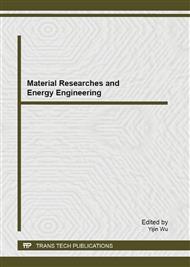p.501
p.507
p.513
p.519
p.524
p.530
p.536
p.543
p.549
Netronic Design of Small Long-Life PWR Using Thorium Cycle
Abstract:
A small long-life core loaded with thorium fuel and 231Pa as burnable poison material has been performed in Pressurized Water Reactor (PWR). Thorium cycle fuel has higher conversion ratio in the thermal spectrum domain and lower reactivity swing than the Uranium-Plutonium cycle fuel. 231Pa have very large capture cross section that can pressed reactivity in the beginning of life. The neutronic analysis result of infinite cell calculation shows that mixed nitride is better than oxide and carbide in thorium fuel system. In the present study we consider thorium nitride system with 3 ~ 8 % 233U percentage and 0.2~ 7% 231Pa as fuel for small PWR and can be burn up for the long time. The purpose of the study is to optimize the design of 350MWt PWR which can be operated without refueling in 10 years The core was designed by cylindrical two-dimension R-Z (radial and axial). The multigroup diffusion and Burn-up analysis was performed by SRAC-CITATION code using libraries based on JENDL 3.2. By using this concept, small PWR can be designed for long time operation with reduced excess reactivity until under 1 % and flatted power distribution during its operation.
Info:
Periodical:
Pages:
524-529
Citation:
Online since:
September 2013
Authors:
Price:
Сopyright:
© 2013 Trans Tech Publications Ltd. All Rights Reserved
Share:
Citation:


